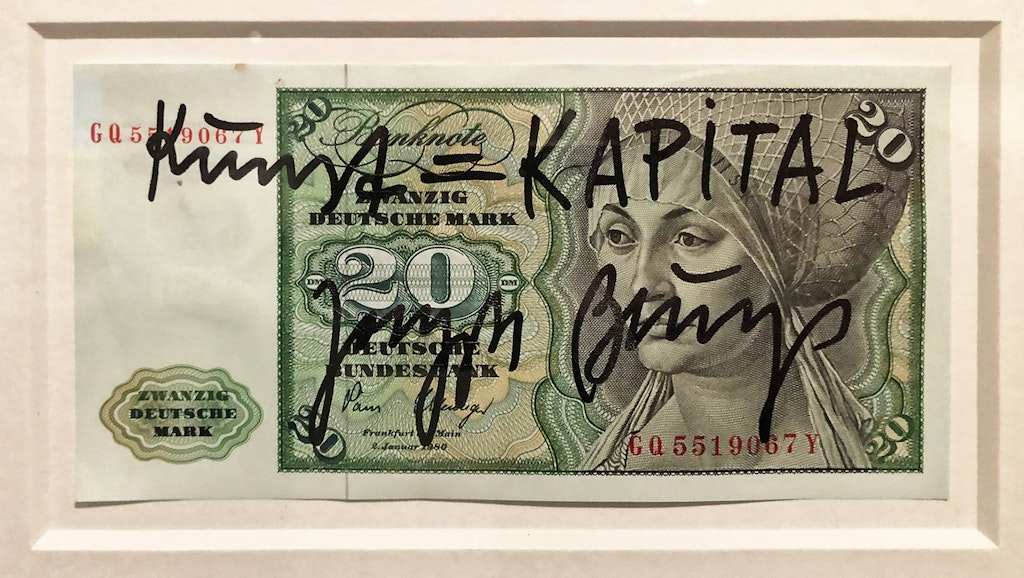Revel in Runyon
A classic gem with extra polish
This article is taken from the May 2023 issue of The Critic. To get the full magazine why not subscribe? Right now we’re offering five issues for just £10.
A “musical fable of Broadway” with its roots in the picaresque tales of the low-lifers and witless gamblers of Damon Runyon’s Depression-era tales, Guys and Dolls is as durable a Broadway warhorse as ever galloped the stage since its premiere in 1950. At heart, it is a morality tale, its lessons of life as lightly worn as the buttock-skimming costumes of the dancers at the Hot Box nightclub where Adelaide (Marisha Wallace) struts her stuff as a feisty doll to Nathan Detroit’s (Daniel Mays, circle, below) evasive fiancé.
The quicksilver cleverness of the book by Abe Burrows and Jo Swerling alongside Frank Loesser’s musical toe-tappers embellish a feast of Broadway capers — illegal crap games, a drunken night in Havana and the fateful interaction of Salvation Army do-gooders with card sharps, visiting mobsters and flat-footed cops.
Runyon plays with streetlife caricatures with the same intuitive understanding and empathy that PG Wodehouse brings to Jeeves and Wooster — a fondness for the rapscallions and brassy ladies, from Detroit to the sleek, bon viveur Sky Masterson (Andrew Richardson) and the Sally Army’s tuneful bombshell, Sarah Brown (Celinde Schoenmaker).
Richard Eyre’s production for the National in the 1980s and Patrick Swayze’s sexy outing as Masterson in the early 2000s set high standards for Nick Hytner’s Bridge Theatre to follow.
A commercial theatre with the scale (and costs) of the Bridge needs the reputation of a hit machine to flourish and taking on Guys and Dolls demands confidence (an under-par production would be living hell). Happily, we get a joyfully immersive experience in which the standing audience is pushed back and forth by New York cops amid cigarette girls and pretzel-sellers plying their trade on Bunny Christie’s buzzing set where pop-up tables with lamps and cocktail glasses emerge under overhead neon signs.
Pretty soon, we’re caught up in Nathan’s hustles to organise an illegal crap game, Miss Adelaide’s dogged pursuit of marriage — and the interlocking stories of Masterson and Brown, whose date starts out as a callous bet, only to end up, in the Beatrice and Benedict way, as a love match in which each has learned from the other.
Schoenmaker is one of the most vocally gifted musical stars for purity and range awards, but the season must surely crown her brassy counterpart as the psychosomatically lovelorn Adelaide, waiting so long for the altar that she sneezes whenever Nathan hoves into view.
Loesser’s songs can’t boast the gossamer-fine constructions of Cole Porter, nor the muscularity of Bernstein’s belters in West Side Story but they do have a sly ability to channel the highs and lows of ordinary folk feeling big things, while trapped in the vernacular of everyday life.
“Wondering whether the wedding is on or off / A person can develop a cough,” laments Adelaide, the good soul and good-time girl, aware that she is “getting a kind of a name for herself, and the name ain’t his”.
If the Hollywood version presented the dames as charming, ditsy sorts, they are updated here in Wallace’s flick of sod-you in “Take Back Your Mink”. Hard as it is to compete with Marlon Brando’s urgent incantation of “Luck be a Lady Tonight” in the great Hollywood version, here it is staged under a spotlight to have us craning to see the throw of the dice gamble on which love and loss will depend.
The choreography is Olympic gold-standard
The choreography is Olympic gold-standard, an inspired combination of Arlene Phillips, whose shiny-floorshow laurels bring a twist of her Hot Gossip-days raunchiness to the Tin Pan Alley routines, and the narrative style of James Cousins in the Havana brouhaha, when teetotal Sarah discovers rum-laden dulce de leche and concludes it would be “a lovely way of getting children to drink their milk”.
Masterson faces homoerotic dance temptations amid the Cuba Libres — a reference perhaps to Brando’s appetite for gay sex but one which takes us nowhere in particular in a plot which has Sky resolutely monosexual.
The great gift of Runyon was to furnish his inventions with nicknames which became as much adopted by the criminal underworld as drawn from it: Harry the Horse, Liver Lips Louie, Big Jule and Nicely-Nicely Johnson. (Elsewhere, we meet Dave the Dude, based on the member of the Luciano crime family who ran the slot-machine rackets for the mob). Unpretty stories, in Runyon’s confections, became witty, stirring tall-tales attractions of guys, dolls and human absurdities.
This was, very sadly, the last production Janine Shalom worked on as a publicist, having handled PR for some of the biggest hits I (and many far longer serving critics) have written about down the years, from Hamilton to Harry Potter and the Cursed Child, and Les Miserables as well as stints at the National and Almeida.
She was, typically, still replying with brisk humour to emails about upcoming productions the day before her sudden death at just 63 and will be deeply missed by contacts, colleagues and friends. A classy, dashing Guys and Dolls was precisely the the right send off — a classic gem, polished to shine again.
Enjoying The Critic online? It's even better in print
Try five issues of Britain’s most civilised magazine for £10
Subscribe














